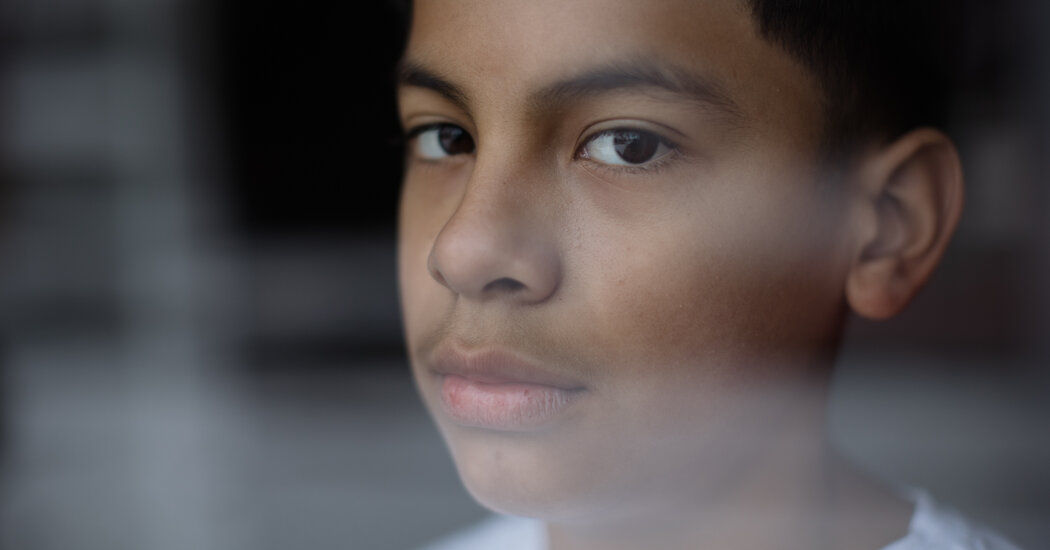Pediatricians should be vigilant, experts said, after the release of the largest U.S. study of the syndrome, MIS-C, that can strike young people weeks after their coronavirus infection.
Many children and teenagers who developed the mysterious inflammatory syndrome that can emerge several weeks after contracting the coronavirus never had classic Covid-19 symptoms at the time of their infection, according to the largest study so far of cases in the United States.
The study, led by researchers from the Centers for Disease Control and Prevention, found that in over 1,000 cases in which information about whether they got sick from their initial Covid-19 illness was available, 75 percent of the patients did not experience such symptoms. But two to five weeks later, they became sick enough to be hospitalized for the condition, called Multisystem Inflammatory Syndrome in Children (MIS-C), which can affect multiple organs, especially the heart.
Published Tuesday in JAMA Pediatrics, the study said that “most MIS-C illnesses are believed to result from asymptomatic or mild Covid-19” followed by a hyper-inflammatory response that appears to occur when the patients’ bodies have produced their maximum level of antibodies to the virus. Experts do not yet know why some young people, and a smaller number of adults, respond this way.
“It means primary-care pediatricians need to have a high index of suspicion for this because Covid is so prevalent in the society and children often have asymptomatic disease as their initial Covid infection,” said Dr. Jennifer Blumenthal, a pediatric intensivist and pediatric infectious disease specialist at Boston Children’s Hospital, who was not involved in the study.
The researchers evaluated 1,733 of the 2,090 cases of the syndrome in people age 20 and younger that had been reported to the C.D.C. as of January.
The findings show that although the syndrome is rare, it can be serious. The C.D.C’s data only included patients who were hospitalized. Over 90 percent of those young people experienced symptoms involving at least four organ systems and 58 percent needed treatment in intensive care units.
Many experienced significant heart issues: over half developed low blood pressure, 37 percent developed cardiogenic shock and 31 percent experienced cardiac dysfunction involving their heart’s inability to pump adequately. The study said that a significantly higher percentage of patients who had not had Covid-19 symptoms experienced those heart problems, compared with those who had initial coronavirus symptoms. A greater percentage of initially asymptomatic patients also ended up in intensive care.
“Even the kids with severe MIS-C, who were in the I.C.U. — the vast majority of them did not have a preceding illness that they recognized,” said Dr. Roberta DeBiasi, chief of infectious diseases at Children’s National Hospital in Washington, D.C., who was not involved in the research.
The study provided the most detailed demographic and geographic picture of the syndrome to date. About 34 percent of the patients were Black and 37 percent were Hispanic, reflecting the way that the coronavirus has disproportionately affected members of those communities. As the pandemic went on, the authors wrote, the proportion of patients who were white increased, comprising 20 percent of all cases. People of Asian heritage comprised just over 1 percent of patients.
Overall, nearly 58 percent of the patients were male, but the proportion was not the same across all ages. The youngest group — newborn to age 4 — had roughly equal numbers of boys and girls, and the male-to-female ratio increased in the older groups until it was more than two-to-one male to female in the 18-to-20 group.
The vast majority of patients (nearly 86 percent) were younger than 15. The study found that those under 5 had the lowest risk of serious heart complications and were less likely to need intensive care. Patients 10 and older were significantly more likely to develop issues like shock, low blood pressure and myocarditis (inflammation of the heart muscle).
“I think that’s similar to what we saw with Covid, that the older kids seemed to have more severe disease,” Dr. DeBiasi said. “And that’s because what makes people really sick from the Covid is the inflammatory aspect of it, so maybe these older kids, for whatever reasons, make more inflammation, whether that’s in primary Covid or MIS-C.”
Still, significant numbers of the youngest patients developed heart problems. In the newborn-to-4 age group, 36 percent had low blood pressure, 25 percent had shock and 44 percent were treated in the I.C.U.
Patients of all ages in the study had about the same occurrence of some of the less-common heart issues linked to the syndrome, including coronary aneurysms and fluid buildup. Children 14 and under were more likely to have rash and red eyes, while those older than 14 were more likely to have chest pain, shortness of breath and cough. Abdominal pain and vomiting afflicted about two-thirds of all patients.
There were 24 deaths recorded, spread across all age groups. There was no information in the study about whether patients had underlying medical conditions, but doctors and researchers have reported that young people with MIS-C were often previously healthy and significantly more likely to be healthy than the relatively small number of young people who become seriously ill from initial Covid infections.
Of the 1,075 patients for whom information about initial Covid illness was available, only 265 had symptoms at that time. They were more likely to be older — their median age was 11, while the median age of those with asymptomatic Covid infections was 8. But that could be because “younger children can’t express their concerns as well,” said Dr. Blumenthal, who co-wrote an editorial about the study.
“We don’t necessarily know if there’s actually less symptomatology in the very young population, ” she said.
Similarly unclear are the reasons behind the study’s finding that in the first wave of MIS-C, from March 1 to July 1, 2020, young people were more prone to a few of the most serious heart complications. Dr. DeBiasi said that did not match the experience of her hospital, where “the kids were sicker in the second wave.”
The study documented two waves of MIS-C cases that followed surges in overall coronavirus cases by about a month or more. “The most recent third peak of the Covid-19 pandemic appears to be leading to another MIS-C peak perhaps involving urban and rural communities,” the authors wrote.
The study found that most of the states where the rate of MIS-C cases per population was highest were in the Northeast, which had the first surge of cases, and the South. By contrast, most states with high per-population rates of children with Covid-19 but low rates of MIS-C were in the Midwest and West. While the concentration of cases spread from large cities to smaller towns over time, it wasn’t as pronounced as the overall pandemic trends, the authors said.
Dr. Blumenthal said that geographic pattern could reflect that the “understanding of the complications of the disease” hadn’t caught up to its prevalence in different regions or that many states with lower rates of MIS-C have less ethnically diverse populations. “It could also be something about Covid itself, although we don’t know that,” she said. “Right now, we don’t know anything about how the variants necessarily affect children.”
The study represented only the strictest criteria for MIS-C, excluding about 350 reported cases that met the C.D.C. definition of the syndrome but had a negative antibody test or primarily involved respiratory symptoms. Dr. DeBiasi said there are also many probable MIS-C cases that are not reported to the C.D.C. because they don’t meet all the official criteria.
“These probable MIS-C kids, in real life that’s a big chunk of kids,” she said. In addition, while the focus so far has been on serious cases, “there’s another whole group of kids that may actually have mild MIS-C.”
If a community has experienced a recent coronavirus surge, then “just because the kid says, ‘I never had Covid or my parents never had it,’ that doesn’t mean the kid in front of you doesn’t have MIS-C,” Dr. DeBiasi said. “If your city has Covid, then get ready.”



















